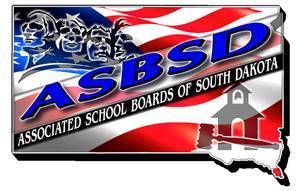On Monday (6/16), members of the Legislative Planning Committee will begin their work on an in-depth study of K-12 education and its different components.
Topics of the study include, the education funding formula, the revenue, expenditures and accounting practices for education, salary needs, budget reserves and tax levies.
“This is a vast, vast topic for legislators to take on,” ASBSD Executive Director Wade Pogany said.
“The committee is going to examine some complex moving pieces in education, but we’re confident that with two years to study these pieces we’ll see even more progress in education funding and we’re thankful the legislature is committed to taking on this task.”
The first committee meeting is scheduled for Monday, June 16 at 10 a.m. in Pierre. The current 11-member committee consists of:
- Rep. Scott Munsterman, Chair
- Sen. Mike Vehle, Vice Chair
- Sen. Corey Brown
- Rep. Kristin Conzet
- Rep. Brian Gosch
- Sen. Tom Jones
- Sen. Ryan Maher
- Sen. Bruce Rampelberg
- Rep. Jacqueline Sly
- Sen. Billie Sutton
- Rep. Susan Wismer
Because the planning committee’s study spans two years committee members may change based on 2014 election results.
Since 1997, when the state adopted the education funding formula for schools, the state’s required to provide an increase in funding of three percent or the change in CPI-W, whichever is less. Schools received a 3.35 percent increase in funding for the 2014-15 school year.
The formula abides by the Cutler-Gabriel principle, which calls for a share of funding between the state and local effort – dollars raised through property taxes – which is approximately 54 percent and 46 percent, respectively.
How the formula could change remains to be seen, but over the past few years the formula’s role in funding has been a widely debated topic. Although the law calls for an annual increase it is reliant on revenue taken in by the state, which can alter the amount of funding provided.
“The discussion around the funding formula will likely have to revolve around adding more ‘pieces to the pie,’” Pogany said. “Right now, there’s only so much money to go around for schools, state agencies and other areas that receive state funding so if we want to increase funding through the formula, additional funding sources for the state will need to be found.”
During last year’s interim study on school funding, school officials repeatedly expressed concern about their ability to attract and retain qualified teachers. The discussion picked up even more traction during the 2014 legislative session.
“This issue has been building for a few years and it’s now beginning to boil over,” Pogany said. “As a state, we need to find a fix for this. The perfect solution may not be found during the study, but it will open eyes and should be the building block to find an answer.”
Part of the 3.35 percent – the .35 percent specifically – was allocated to schools to provide an ongoing increase in teacher pay. The .35 percent increase equals an additional $2.2 million for schools that will be distributed via an extra $16.72 per student.
The guidelines for the planning committee’s study do not specifically require a focus on teacher salary needs, but it is likely to be the centerpiece of the discussion.
A review of the revenue, expenditures and accounting practices for education will likely examine the funding sources for school districts, what expenditures districts have and the many different funds in a school district’s budget. In addition, the total budget reserve levels of school districts increased over the last few years and the planning committee will take a close look at why. Finally, the tax levies of school districts will also be examined.
The scope of the study could be adjusted during its duration.
ASBSD will provide updates on the planning committee’s activities as they become available. For information check the ASBSD Blog or follow us on Twitter @asbsd_org.
“We’ll cover the study extensively and we’ll be involved when called upon by the committee,” Pogany said.
“The K-12 community and the legislature – along with the Governor’s office – have made great strides to collaborate and continue to enhance our public school system and the long-term study will go a long way in continuing all of our work.”
